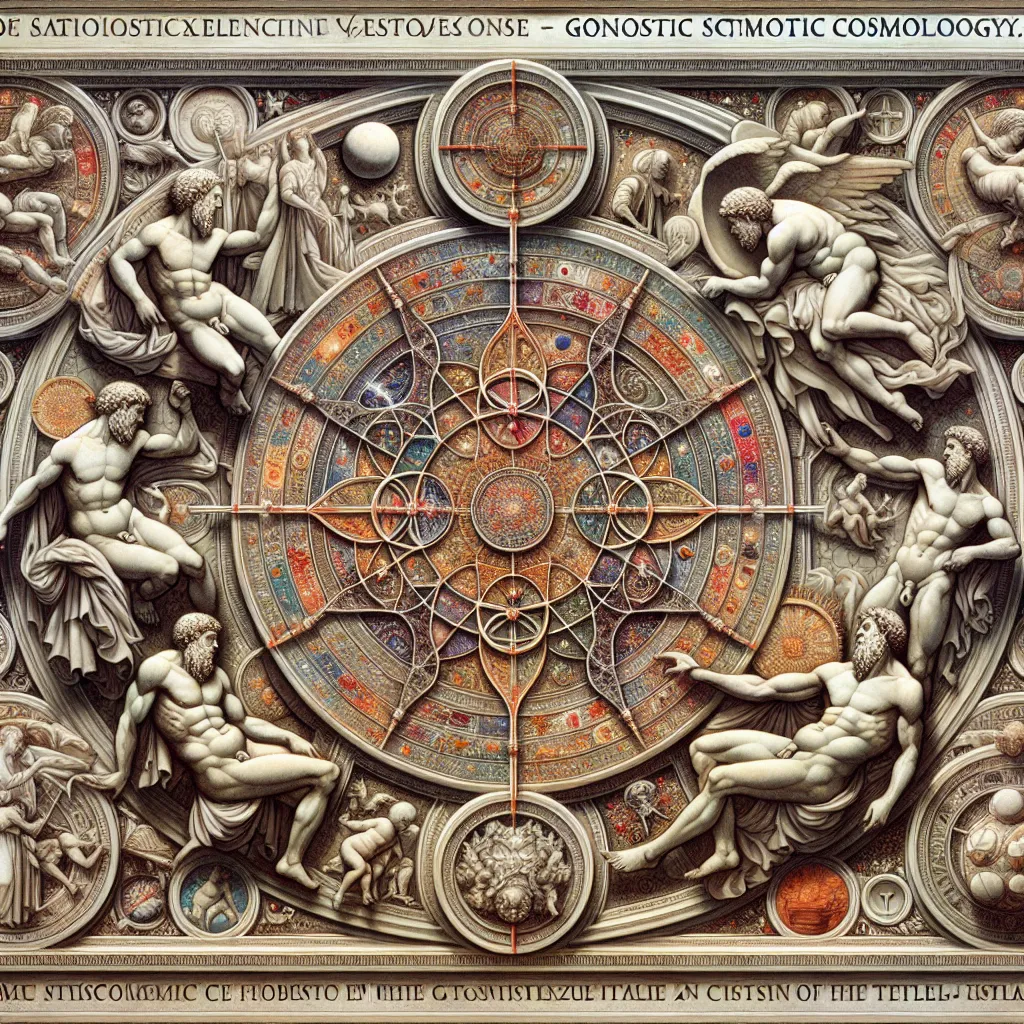
- Published on
- Authors

- Name
- You
The Gnostic Cosmology: Unveiling the Mystical and Scientific Nature of the Cosmos
In the vast expanse of the universe, ancient spiritual knowledge and modern scientific discoveries often intersect, offering us profound insights into the nature of existence. Among the myriad of ancient wisdom traditions, Gnosticism stands out with its rich cosmological tapestry that addresses the origin and structure of the cosmos. Through the lenses of Pleroma, Demiurge, and the material world, Gnosticism provides a unique perspective that echoes through the corridors of both mystical wisdom and advanced quantum mechanics.
The Pleroma: The Fullness of Divine Reality
The term Pleroma is derived from the Greek word meaning "fullness." In Gnostic cosmology, it represents the totality of divine powers and the spiritual universe. Think of the Pleroma as the ultimate source, a boundless realm of pure light and consciousness, the wellspring from which all existence flows.
Attributes of the Pleroma
| Aspect | Description |
|---|---|
| Origin | The absolute source of all things, encompassing infinite potentiality. |
| Nature | Non-material, transcendent, and filled with divine beings known as Aeons. |
| Purpose | To express and propagate divine consciousness through emanation. |
This concept can be paralleled with the quantum vacuum, a state of potential from which particles and energy spontaneously emerge. Just as the Pleroma is filled with divine potentials, the quantum vacuum harbors the primal energies that give birth to the physical universe.
The Demiurge: The Architect of the Material World
In stark contrast to the Pleroma, the Demiurge is an inferior deity or cosmic craftsman in Gnostic belief. Often depicted as ignorant or malevolent, the Demiurge is responsible for creating the material world, an imperfect and often troubled realm.
Understanding the Demiurge
| Mythological Role | Scientific Parallel |
|---|---|
| Creator of Matter | The force that organizes the chaotic quantum state into structured matter. |
| Ignorance | Represents the limitations of classical physics when faced with quantum complexities. |
| Imitator | Mimics divine creation but falls short of the Pleroma's purity and perfection. |
The Demiurge's creation can be likened to the transition from quantum potentiality to classical reality. Quantum mechanics suggests that our material world is a projection of deeper, non-material layers of reality, much like the Demiurge's world is a flawed copy of the Pleroma.
The Material World: A Duality of Light and Shadow
The material world, as fashioned by the Demiurge, is where we reside—a place of duality, filled with both light and dark, knowledge and ignorance, joy and suffering. According to Gnosticism, our world is a battlefield between the spiritual enlightenment of the Pleroma and the entropic nature of the Demiurge's domain.
Material World Characteristics
| Duality Aspect | Description |
|---|---|
| Light and Shadow | Reflects the struggle between spiritual awakening and material entrapment. |
| Knowledge and Ignorance | Pursuit of gnosis (knowledge) to transcend material illusions. |
| Suffering and Joy | Experiences that drive the soul towards spiritual realization. |
In contemporary science, this can be seen through the lens of entropy and negentropy—the former pulling systems towards disorder and the latter driving towards complexity and life. The dance of light and shadow in the material world mirrors the quantum dance of particles, wavering between order and chaos, paving the way for evolution and consciousness.
Bridging Mystical Wisdom and Quantum Mechanics
As we explore Gnostic cosmology, it becomes apparent that ancient spiritual doctrines share profound resonances with the cutting-edge discoveries of modern science. Quantum field theories suggest a universe teeming with unseen energies and potentials, much like the Pleroma. The imperfect material world crafted by the Demiurge finds its reflection in the emergence of structured but flawed realities from the quantum substratum.
Moreover, the pursuit of gnosis—a deep, intimate knowledge of the divine—is akin to the scientific quest to understand the underlying principles of the universe. It calls for a synthesis of intuition and intellect, spirituality and empiricism, to transcend the illusions of the material world and reach the fullness of the Pleroma.
Through this mystical and scientific lens, Gnosticism not only offers a map of the cosmos but also a guide for our spiritual and intellectual evolution. By embracing the unity of ancient wisdom and contemporary science, we can tread a path towards enlightenment, where the esoteric and the empirical converge in the dance of cosmic understanding.
Let us embark upon this journey with open hearts and minds, blending the mystic’s vision with the scientist’s rigor, to illuminate the profound mysteries of the cosmos and our place within it.
